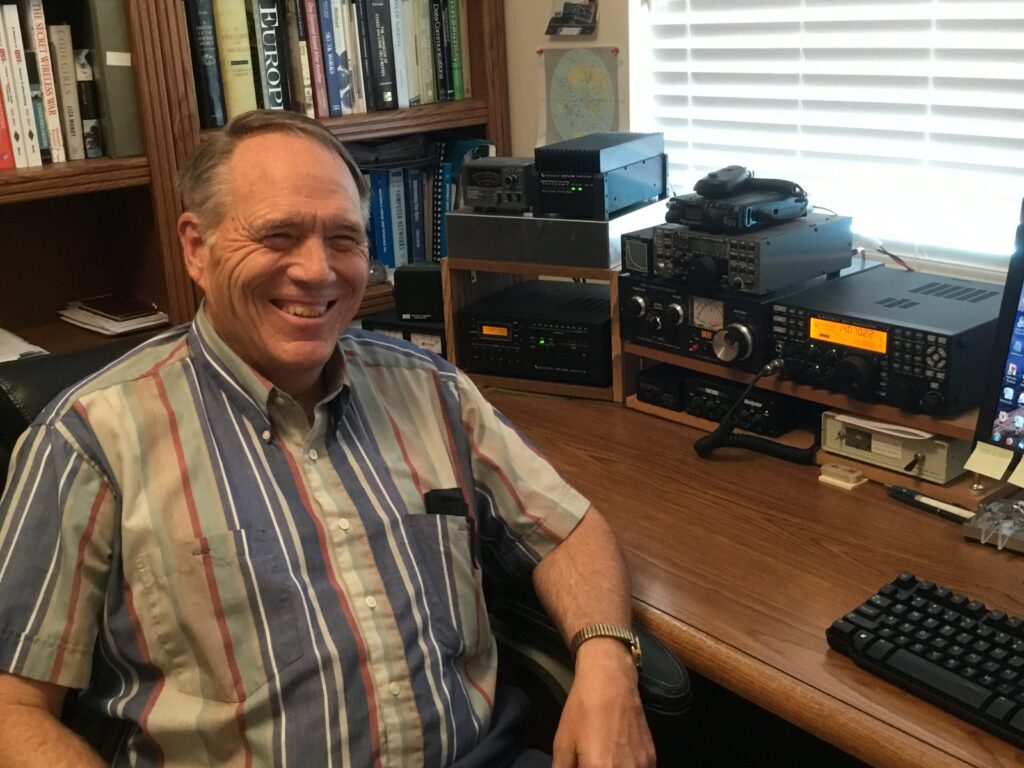
The study of over the horizon HF radio communications is fascinating. It is also a lot of fun as we have discovered through DXing, contesting, and general rag-chewing. However, at times HF communications becomes serious work. There are still parts of the United States and Canada where HF radio is often the only form of communications available. This is particularly true in remote and mountainous regions, as the author painfully discovered. In his excellent book “Propagation and Radio Science” Eric Nichols (KL7AJ) describes the difficulties of communications in the vast interior of Alaska where people are widely scatter over long distances. HF communications, of course, becomes critical during natural disasters when the infrastructure, including our own antennas, are completely destroyed. The ability to quickly get an antenna up and begin operating under portable electrical power becomes essential. We practice the ability to do this every year during the June field day event. The problem appears to becoming worse. Severe weather, particularly hurricanes and tornadoes, seem to be occurring more frequently and becoming more violent. Of course in California we have the ever present danger of large earthquakes. Following an earthquake, it is a very hollow feeling knowing that you can not contact your family in other parts of the country, letting them know that you are ok, because all telephone, cell phone and internet service is out.
As amateur radio operators we have successfully dealt with less than ideal situations from the very beginning of amateur radio when we were exiled to the “worthless” frequency bands of 200 meters and down. Yet we became very successful at relaying messages across country and achieving moderate distance point to point communications. In the process we discovered the exciting world of short wave radio. From the very beginning of WWII, radio propagation conditions deteriorated with solar cycle minimum occurring in 1944 and persisting through the last year of the war. Despite deteriorating conditions, radio operators learned how to deal with the situation and got their radio traffic through. They had to! At the time HF radio was the only means of long distance communications between land based stations (all telephone and telegraph lines in the war zone had been cut) as well as with ships at sea and aircraft.
Being really good at what we do depends in part on having a solid understanding of the science underlying ionospheric skywave communications. Not only is such knowledge critical during natural disasters, it also makes the fun parts of our hobby (contesting, DXing, etc.) more interesting and successful. Understanding and marveling at what is happening as our radio waves travel through the ionosphere from here to there is exhilarating.
There are a number of outstanding graduate level text books on HF radio communications, Kenneth Davies book “Ionospheric Radio” being one of the best. These books, however, are not light reading.
The purpose of this website is to write and electronically publish an in-depth book on HF radio communications that is easy to read and understand. It is hoped that by publishing the book online it will become available to a wider audience. Publishing the book as part of a website provides immediate access to solar, space weather, and ionosphere current conditions that hopefully make the book become alive. You can actually see and experience what the book is talking about. In addition, the website makes possible inclusion of interesting short articles, some of which are difficult to find, as well as including useful communication tools, slide presentations and video presentations.
Writing an in depth book on skywave radio communications is a difficult slow process. Writing a single chapter typically involves months of detailed research, followed by writing, and seemingly endless editing to ensure that the chapter is accurate, informative, and easy to read. For that reason, this book is being published chapter by chapter as chapters are written. The first five chapters provide an in depth study of the Sun and solar events that drive the ionosphere and affect our ability to communicate. These chapters will be followed by chapters on space weather, formation of the ionosphere, HF radio propagation, unusual propagation modes, problems encountered during normal conditions, disruptions of normal conditions, and predictions of HF conditions.
Finally, it is intended that this be an open source website meaning that you are free to use the information provided here for non-commercial applications. Particularly for articles that you may be writing, club newsletters, and club presentations.
It is hoped that you find this web site interesting, informative, and above all useful.
73,
Ken KJ6RZ
